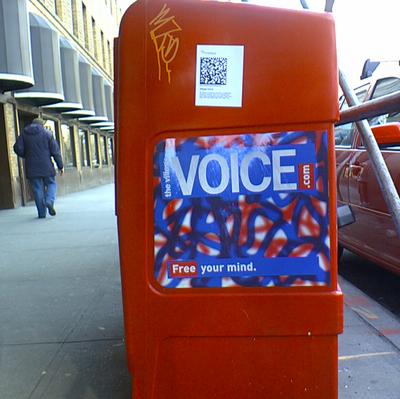

Lemony Snicket is just a narrative personality he puts on-it's part of Daniel Handler, but it's just a narrator. Daniel Handler is the real author and has written several other books.
VILLAGE VOICE RETURNS VERY VILLAGE VOICEY SERIES
Let's look at some examples.Ī Series of Unfortunate Events is narrated by Lemony Snicket, but he has also narrated other books such as Poison for Breakfast and All the Wrong Questions, and while "he" is listed as the "author," he's not. Now, in some stories, each piece may be more distinct than in other stories. So, when you look at this, you realize, to some degree, they all overlap, though to some extent, they are individual pieces. Or not, it just depends how you want to slice and dice it. Inside of that is the character's voice-and you may even break this down further, into the viewpoint character's voice and then into any nonviewpoint characters' voices (which is often coming through the viewpoint character's perspective, obviously).

Now, you may have multiple books that have the same narrator, but the narrator's voice is not the exact same as the author's voice. Inside of that is the narrator's voice-this is the voice of the narrator of a particular story. The biggest doll is the author's voice-because every story the writer writes helps make up that voice. (I know I've used that as a comparison for story structure, but it works well with voice too.) See, it's sort of like a Russian nesting doll. So how the heck do these work together, and how do we utilize and get them on the page all simultaneously? How the Writer's Voice, Narrator's Voice, and Character's Voice Work TogetherĮvery book has characters, a narrator, and a writer. It just shows up as subtext, which also makes a story powerful. Sometimes avoiding talking about a topic, or perhaps tactfully steering away from a topic can show as much personality as what is in the text. *Okay, it also sometimes includes what's not said, and the way it's not. Together, this is how the writer's, narrator's, and/or character's personality gets on the page.* Voice is made up of both, not just the content and not just the way it's communicated. One is about content and the other is about how it's communicated. What a Person Thinks or Talks about + How She Says It = Voice So really, one might simply sum it up like this: What the Narrator Thinks or Talks about + How He Says It = Narrator Voice What the Writer Thinks or Talks about + How She Says It = Author Voice What the Character Thinks or Talks about + How He Says It = Voiceīut in prepping for the podcast, I realized. And for years when talking about character voice, I have used this equation: In the recent podcast, the host, Sacha Black mentioned a few times how voice is simply that person's personality, and that's a great way to say it. So what is it exactly? And how do we put it to work? It's also one of the first things that can grab a reader. Multiple times I have heard agents and editors talk about how voice is one of the first things to grab them. While voice may feel elusive and ambiguous, it's one of the most effective ways to give audiences a powerful impression of who you, your narrator, and/or your character are. So in this post, I'd like to define and talk about each. Recently, I was on The Rebel Author Podcast as a guest to talk about character voice, and when preparing, I spent some time thinking about the other two types. It can all get pretty tricky pretty fast. And for the narrator's voice, well, in most stories, it's often very similar to the writer's or the character's voice. Probably because it's not so much something you learn as something you already have and develop. I've written posts on character voice before: " What You Need to Know Most About Character Voice," " Dos and Don'ts for Writing Your Viewpoint Character's Voice." But I've never really talked about the author's voice. Often we know it when we see it, but what is it? And like many writing subjects, voice can seem elusive when you are learning. Like many writing terms, "voice" can be a little ambiguous, mainly because it happens at three levels: the writer's voice, the narrator's voice, and the character's voice.


 0 kommentar(er)
0 kommentar(er)
